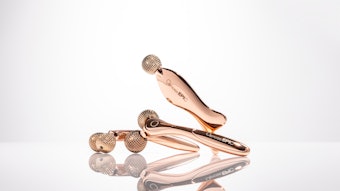You could not exist without touch. From the moment of your birth to the final minutes of your life, touch is one basic human need for which everyone hungers. It is an essential force that shapes and molds your personality, as well as how you present yourself in the world.
Through physical touch, a variety of emotions and reactions is conveyed and elicited. There are many forms of touch—a friendly handshake, a loving pat on the cheek or even a punch that delivers pain and discomfort.
Touching someone begins when you enter into their presence. You can tell immediately whether you are welcome or are perceived as an intrusion. You either are enveloped by the warmth of closeness and familiarity or are blocked by a wall of coldness.
Categories of touch
Although touch offers a richly detailed and almost infinite range of sensations, some of the most frequent types include the following.
Loving and/or intimate. Hand-holding, hugs, kisses or an arm draped across your shoulders all are types of touch that bring out feelings of fondness, desire, tenderness, passion and belonging.
Needy. If you have young children or pets, this method of touch is a familiar one. It is experienced in the hugging of a leg or the tugging of clothing by a child as a request for attention, as well as by a puppy pushing its nose under your hand, begging for a scratch on the head.
Healing. Hands-on practitioners use this form of touch with their clientele in order to promote good health, stress relief and recovery from an injury. Some forms are gentle and relaxing, while others are deep and penetrating.
Inquisitive. Babies who are only months old explore their new world of faces, colors, shapes and temperatures by touching and grabbing. The blind learn to “see” with their hands. Physicians use touch to get a better idea of where you may be feeling pain or where there is an abnormality that may require further examination.
Abusive and/or aggressive. Many people are affected by those who express themselves through hitting, slapping or forcing themselves on others.
Other senses. In fact, all of your senses are an extension of touch. When you hear sounds, a flurry of air molecules touches the delicate membranes of your inner ears. When you see something, light waves touch your sensitive retinas. The senses of smell and taste similarly require molecules to touch the membranes of the nasal passages and the tongue, respectively.
Physical and emotional healing
As estheticians, massage therapists and body workers, you have an important role in regard to this most special of senses. Unlike most other professionals, your work gives you the opportunity to connect with others through sustained, intentional touch. Your touch assists bodies in regenerating, rejuvenating and relaxing, which leads to the healing of physical, emotional and spiritual injuries.
For years, a plethora of research has been done to prove the validity of physical and emotional healing through touch. At the University of Miami’s School of Medicine’s Touch Research Institute (TRI), which began conducting formal research in 1992, teams of physicians and psychologists investigate and document the role of touch in health and wellness. As revealed by the TRI’s studies, touch therapy yields many positive effects, including facilitating weight gain in preterm infants, reducing stress hormones, alleviating depressive symptoms, easing pain, improving immune function and altering electroencephalography (EEG)—a test that measures and records electrical brain activity—in the direction of heightened awareness.
Healing environment
Bernie Siegel, MD, the respected author and surgeon who founded Exceptional Cancer Patients (ECap) and specializes in mind/body/spirit medicine for chronic illnesses, once said, “The person to help is always the one in front of you. The time to help is now, and the thing to do is what that person needs. We make a difference by helping individuals. The ripple effect is a powerful one.” This ripple effect can begin before you ever lay a hand on your client. It starts in your facility’s space. Offering an environment that promotes the healing provided by touch is equally important.
What are your clients walking into when they enter your spa? What does the landscaping say to them as they approach your front door? Provide beautiful flowers, full bushes and trees, and flowing water. Offer a place to sit in which your clients can contemplate life and enjoy the beauty of nature before coming inside for a much-needed treatment. Ensure that clients are greeted by a team member who possesses a serene and helpful presence that welcomes them to relax and enjoy this time for themselves. Provide a seating area that allows clients to gather themselves both mentally and emotionally before beginning their session. In this way, people are touched through all of their senses. A nonintrusive and loving energy can be communicated through the color of the walls, comfortable furnishings, subdued lighting, soothing music, products and even the equipment used.
A caring challenge
In this profession, you connect with people from all walks of life. Your clients are bombarded with many types of touch throughout their day. It is your challenge to make your touch a conscious, caring experience that deflects negative energies and encourages compassion while engendering a sense of trust, acceptance and nurturing. This is the most special gift you can offer your clients, and it is the same gift that they give back to you. Through this exchange, you can create a life path for yourself and for others that has meaning and value.










